So, it’s that time of year again; the sun is coming out, the weather is warming up. Soon you’ll be able to put your winter clothes away and get your summer clothes out. Joseph Jackson, an Assistant Preventive Conservator in our Collections Care team, has compiled a handy storage guide providing simple tips on how to get the most out of your winter knits.
Location, location, location
Two of the most important things to consider when packing away items from your winter wardrobe are: where you will store them and how you pack them. Storing knitwear in somewhere like the attic or a basement may seem like a convenient solution. However, these spaces can often present problems including risks from pests, damp and possible light damage if your storage area has windows. These risks can all be mitigated by following a few simple steps.
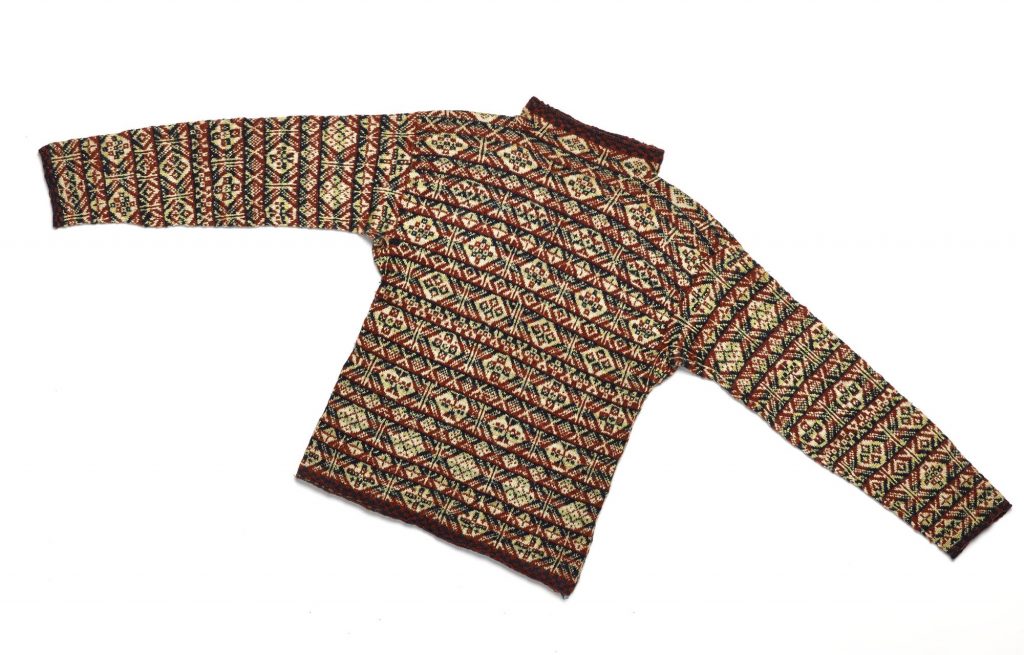
Wrappers delight
Make sure any items stored in spaces like attics, cellars, or any other undisturbed areas, are securely wrapped/packed away – this can help prevent damage from pests such as moths, beetles or rodents. Before storing items, cleaning is key. Make sure the area you’re using is as clean as possible and remember to clean your knits prior to storage – food stains can attract unwanted visitors!
Identifying an infestation
One of the most common types of damage to textiles can be from moths, particularly webbing clothes moths (Tineola bisselliella). While the adults do not feed on the textiles, the larvae can cause considerable damage, especially in large numbers. Things to look out for when identifying infestations are:
- Live moths flying around or sat on textiles
- Fine debris on the surface of the textile known as ‘frass’. This can include pieces of dislodged textile as well as silk spun by larvae
- Larvae – these are particularly difficult to spot due to their size and are often only noticeable in larger numbers. Large numbers of adults may indicate a breeding colony.
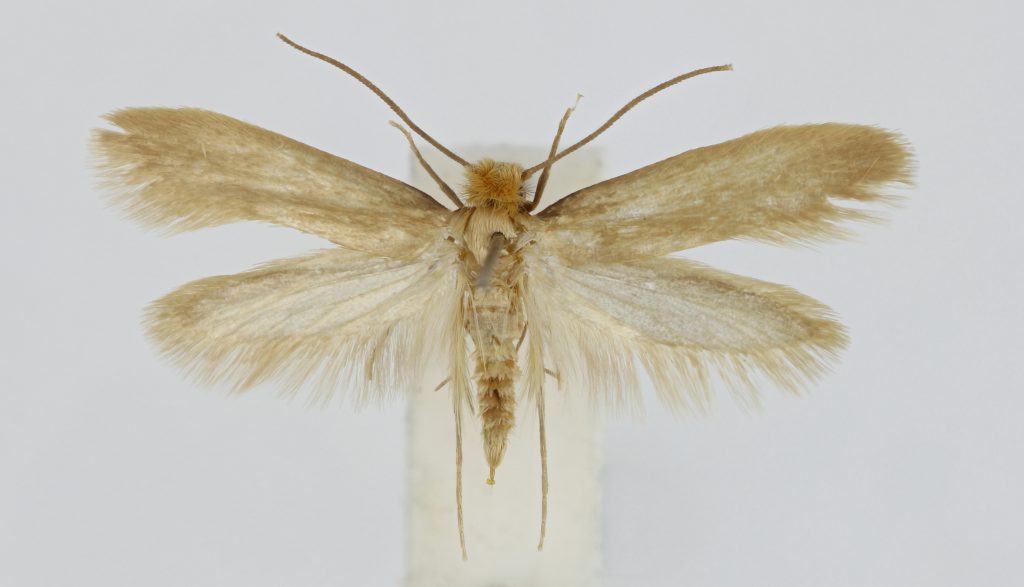
Treating infestations
At National Museums Scotland, we have a dedicated quarantine freezer which allows us to freeze items to a temperature of -30° Celsius over a period of 5 days, thus eradicating any infestations present in the objects. However, this is most likely not feasible with a freezer you might have at home.
While freezing items can be an effective way of dealing with infestations you should always consult a professional conservator before you attempt to do so. Home freezers may not reach sufficient temperatures to eliminate any pests, resulting in returning infestations. You can find an appropriate conservator through the conservation register.
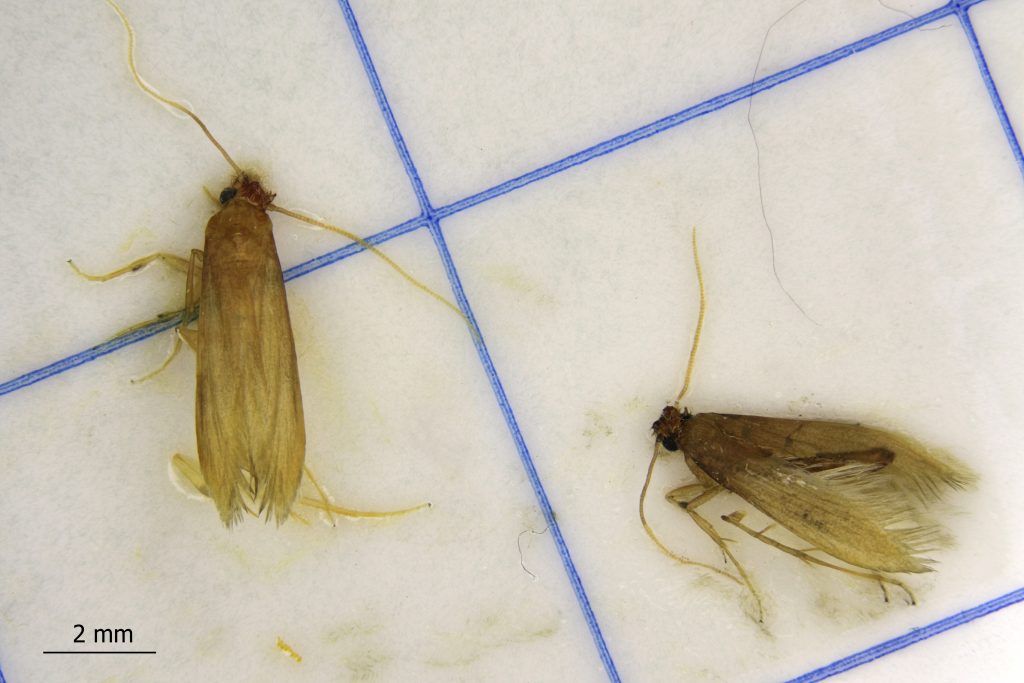
Take photos along the way
It can be useful to keep a photographic log of your items from before and after storage to help you identify any damage which may have happened while it was packed away. Photographic comparisons can be particularly useful when identifying instances of light damage. Prolonged exposure to daylight can damage textiles through a process called photolytic degradation, the process by which light degrades material.
Excessive exposure to light can both discolour the item as well as weaken fibres, damaging the structure of the textile itself. You may want to consider this when choosing your storage area by choosing an area with no daylight, or simply installing a set of curtains or blinds.
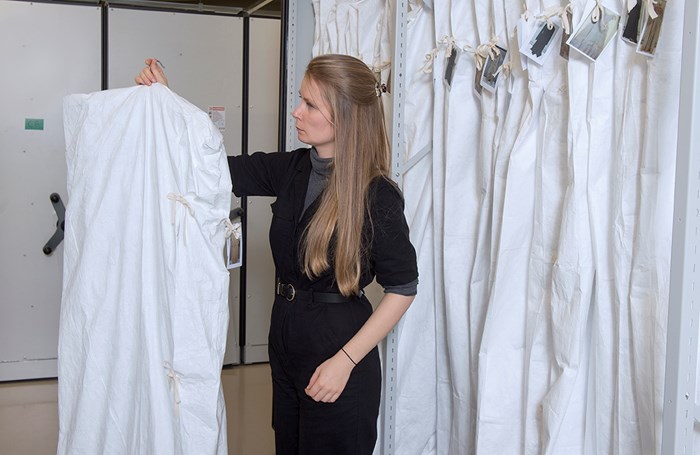
Hang up or pack flat
The next thing to consider is how you store your items. Often the most practical way to store textiles can be to use hangers, making for easy access as well as preventing creasing. However, as stated previously, you may want to use covers for your items to help prevent damage through light exposure as well as pests. Covers can also limit the risk of abrasion from other textiles which might be stored adjacently. Make sure your knits have ample space if stored this way as over-filling a clothes rail can cause further creasing and damage through snagging.
When using hangers, it’s always good to have some sort of padding attached to the hanger itself to provide some extra support. This can be as simple as wrapping acid-free tissue paper around the ends of the hanger prior to use.
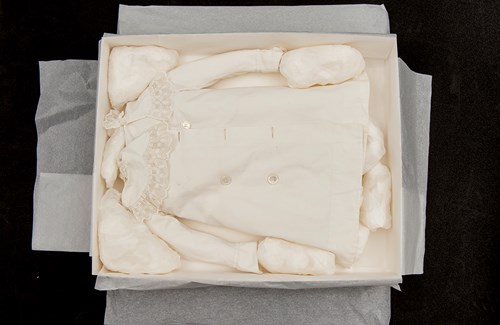
Sometimes it’s not possible to hang specific items due to their size. Knits, for example, are generally better stored flat due to their weight. In which case, boxing up items may be a more suitable technique. The main issue you may find with storing items this way is that they crease. Textile items are particularly susceptible to damage through creasing. However, you can limit the extent of this by using rolls of acid free tissue paper to support the folds. A more detailed video of how to do this can be found below.
Forever knits
At National Museums Scotland we store and conserve thousands of textile objects, ranging in design, shape and material type. The advice laid out in this blog stems from responsibilities which our own collections care staff adhere to, including rotating our displays to ensure that our collections are only exposed to light for a set period.

Giving our items a rest reduces the risk of discolouration and other forms of damage. You can do the same by following the tips in this blog, making sure your knits have a long and happy life!
